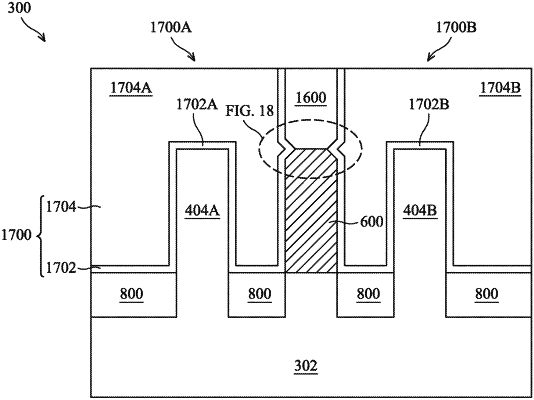| CPC H01L 27/0924 (2013.01) [H01L 21/823431 (2013.01); H01L 21/823481 (2013.01); H01L 29/0649 (2013.01); H01L 29/6681 (2013.01); H01L 29/7851 (2013.01)] | 20 Claims |

|
1. A semiconductor device, comprising:
a first semiconductor fin and a second semiconductor fin extending along a first direction;
a dielectric fin that extends along the first direction and is disposed between the first and second semiconductor fins;
a gate isolation structure vertically disposed above the dielectric fin; and
a gate structure extending along a second direction perpendicular to the first direction, wherein the gate structure includes a first portion straddling the first semiconductor fin and a second portion straddling the second semiconductor fin,
wherein the gate isolation structure has a bottom surface including a first portion, a second portion, and a third portion, and the dielectric fin has a top surface including a first portion, a second portion, and a third portion;
wherein the first portion of the bottom surface and the first portion of the top surface form a first angled profile, and the third portion of the bottom surface and the third portion of the top surface form a second angled profile, the first angled profile and the second angled profile pointing toward one another; and
wherein the second portion of the bottom surface is in contact with the second portion of the top surface, with the respective first portions and the respective third portions of the top and the bottom surfaces tilted away from the second portions of the top and the bottom surfaces toward opposite directions.
|